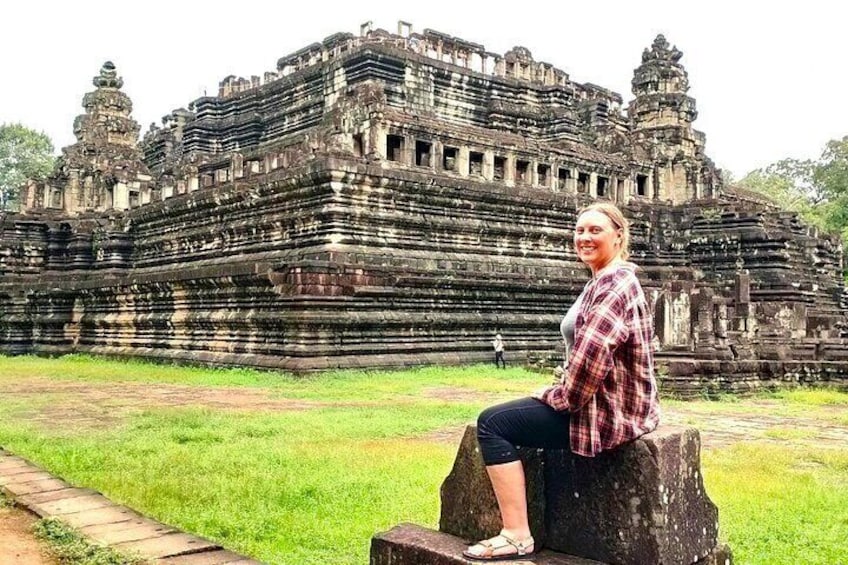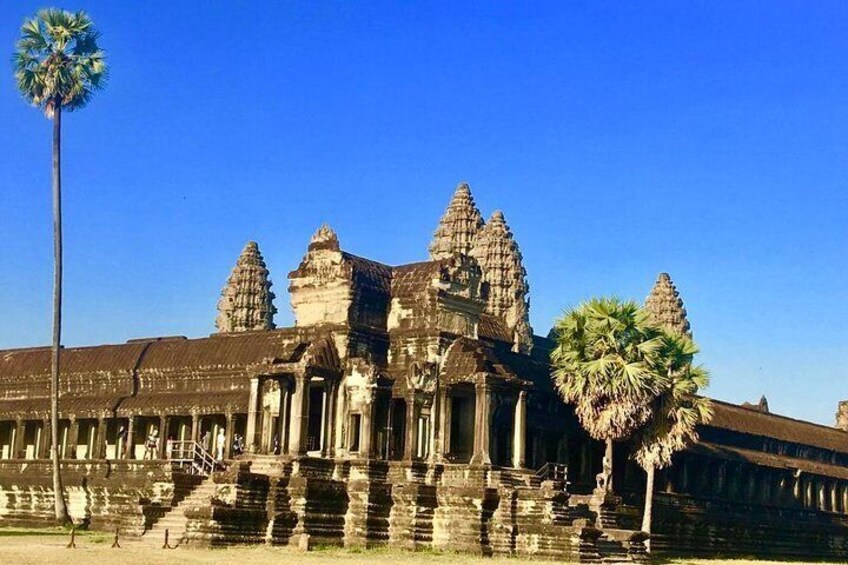Members save 10% or more on over 100,000 hotels worldwide when you’re signed in





Private Siem Reap 3 Day Tour Discover All Highlight Angkor Temple
10/10
10 out of 10Features
- Free cancellation available
- 3d
- Mobile voucher
- Instant confirmation
- Selective hotel pickup
Overview
Private Siem Reap 3 Day Tour to Discover All Highlight Angkor Temples to see Sunrise and Sunset & Tonle Sap Floating Village is the best choice for your visiting the Angkor Archaeological the world heritage site of UNESCO that we selected the most interesting site to add in the tours itinerary for this tours packages as you will see famous sunrise at Angkor Wat and Beautiful sunset at Phnom Bakheng temple with exploring the small and grand circle as Angkor Thom, Bayon , Terrace of Elephant and Ta Prom , Bateay Srei temple with the beginning temple at the Rolous Group with Bakong temple and not only the temple in the tours we have another special activity as go by cruise at Tonle Sap lake to visit the floating village at Kampong Phluk to see more the every day life of the Cambodia people.
Activity location
- Preah Ko
- Siem Reap, Cambodia
Meeting/Redemption Point
- Preah Ko
- Siem Reap, Cambodia
Check availability
Private 3 Day Siem Reap Tour
- 3d
- English
Pickup included
What's included, what's not
- Private cruise tours to visit floating village at Tonle Sap lake
- Drink water and cool fresh tower for the whole trips
- Professional English speaking licence tour guide
- All transfer by private air-con vehicle as mentioned in the tours itinerary
- Private hotel pick up and drop off, Please provide us your hotel name in Siem Reap for tour pickup
- All other accounts are not mentioned in the above inclusion
- Tips for tour guide and Driver
- Angkor entrance ticket. You will need for this tour. you can buy it on morning of first day tour
Know before you book
- Infants and small children can ride in a pram or stroller
- Public transport options are available nearby
- Specialised infant seats are available
- Suitable for all physical fitness levels
Activity itinerary
Day 1: Explore Angkor temples, Bakong temple, Tonle Sap Lake, Floating Village and City Tours
- 7 stops
- Meals: Not included
- Accommodation: Not included
Preah Ko
- 30m
- Admission ticket not included
Bakong Temples
- 1h
- Admission ticket not included
Lolei
- 30m
- Admission ticket not included
Kampong Phluk Floating Village
- 3h
- Admission ticket included
Wat Bo Temple
- 1h
- Admission ticket included
Satcha - Cambodian Handicraft Center
- 1h
- Admission ticket included
Tonle Sap Lake
- 30m
- Admission ticket included
Day 2: Angkor Wat Sunrise and explore Angkor Thom Complex, Bayon and Ta Promh
- 10 stops
- Meals: Not included
- Accommodation: Not included
Angkor Wat
- 3h
- Admission ticket not included
Angkor Thom South Gate
- 30m
- Admission ticket not included
Bayon Temple
- 1h
- Admission ticket not included
Baphuon
- 1h
- Admission ticket not included
Phimeanakas
- 30m
- Admission ticket not included
Terrace of the Elephants
- 45m
- Admission ticket not included
Terrace of the Leper King
- 45m
- Admission ticket not included
Ta Prohm
- 1h
- Admission ticket not included
Banteay Kdei
- 7h 30m
- Admission ticket not included
Ta Nei Temple
- 40m
- Admission ticket not included
Day 3: Discover Banteay Srei, Angkor Grand Circle with watch sunset at Phnom Bakeng temple
- 7 stops
- Meals: Not included
- Accommodation: Not included
Banteay Srei Temple
- 2h
- Admission ticket not included
Banteay Samre
- 1h
- Admission ticket not included
Palm Sugar Producer Group and souvenir sellers
- 1d
- Admission ticket included
Prasat Preah Khan
- 2m
- Admission ticket not included
Neak Pean
- 1h
- Admission ticket not included
Pre Rup
- 1h
- Admission ticket not included
Phnom Bakheng
- 1h
- Admission ticket not included
Location
Activity location
- Preah Ko
- Siem Reap, Cambodia
Meeting/Redemption Point
- Preah Ko
- Siem Reap, Cambodia